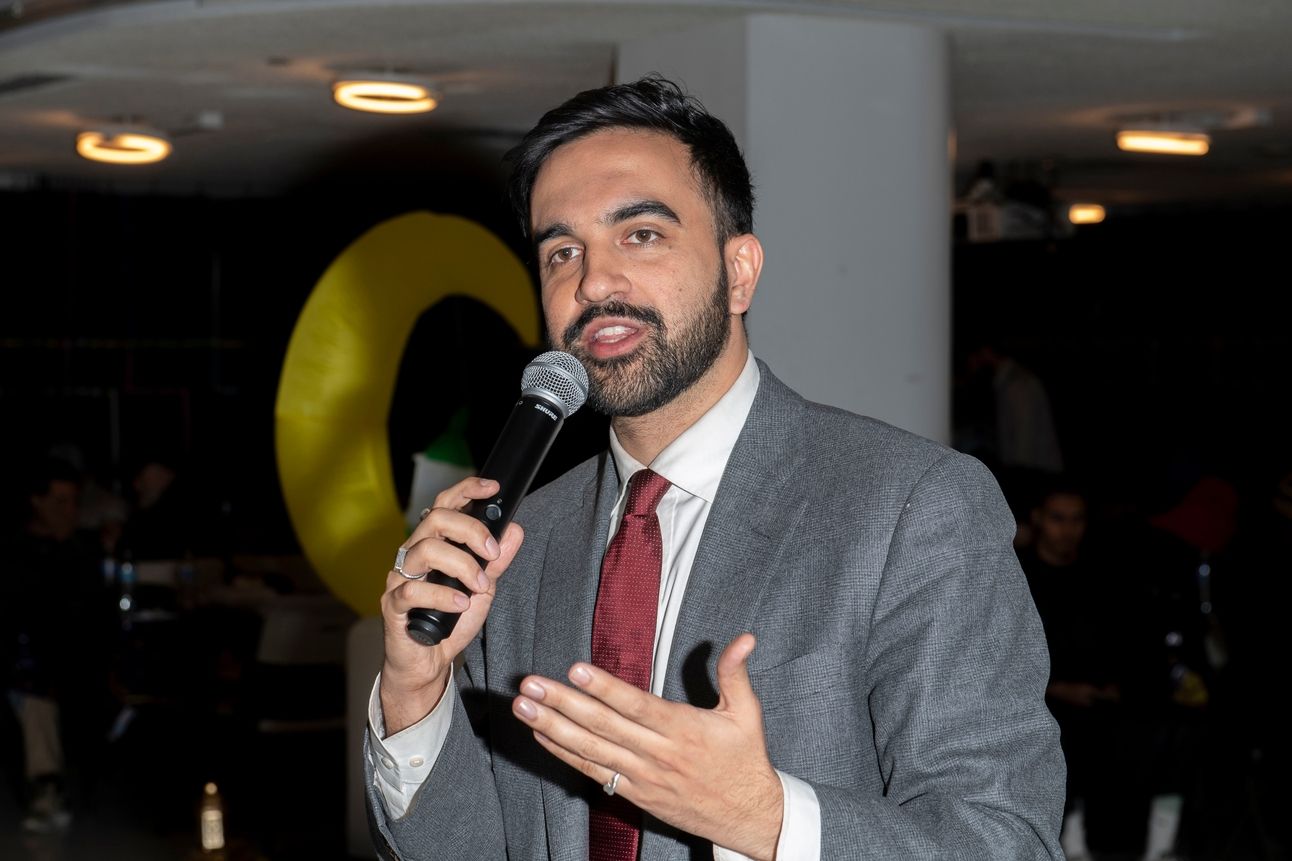- College Journalism
- Posts
- How a mayoral race solidified what you already know from class
How a mayoral race solidified what you already know from class
Plus, a new Poynter AI ethics template, new vs. old media (again), and three new from-scratch classroom tools.


Zohran Mamdani speaks in March. (Ron Adar // Shutterstock)
Zohran Mamdani’s victory in the New York City mayoral primary seems to have national media observers and researchers catching up with what we’ve seen in our classrooms for many semesters now: Young people communicate differently.
(I will pause while you chuckle at the obvious.)
The think pieces, analyses and hot takes of the 33-year-old’s win are still pouring in. There’s no shortage of opinion about how he did it — It was podcasts! It was social media! It was short-form video! — though plenty of thoughtful internet culture journalists have argued that social media and podcasts don’t win elections; messaging does.
Still, all roads lead to communications.
It’s validating to see the national media machine catching up to a reality we’ve been living for some time: that there’s a communications momentum shift that most of us have endeavored (and, OK, probably struggled) to reflect in our teaching.
Because so many of us came up through legacy media, it can feel challenging and even overwhelming to meet the moving target of demands presented by the current news media ecosystem.
I see you and I hear you. I hope today’s newsletter helps you continue to do this hard and important work.
HEADLINE ROUNDUP
Stephen Goforth has a roundup of articles about AI’s impact on university faculty and administrators. (Scroll down for Poynter’s updated AI policy template.)
A British journalist launched a new app designed to create short video versions of longer text stories. Provocative stuff! I wrote an assignment for your students to try it and offer feedback.
A recently released study about news-academic partnerships from the Center for Community News at the University of Vermont shows a strong relationship between public media and student journalism: “More than 88% of local NPR/PBS affiliates engage college students to help cover their communities.”
A new Texas law will allow university presidents to control faculty senates at state schools.
If you’re a member of the College Media Association, please fill out their annual benchmarking survey! If you’re an adviser to student media who’s not a CMA member, why not? Join here — it’s only $100 a year.
The Chronicle of Higher Education has a pretty pricey ($179) leadership guide on navigating NCAA/athletics changes over the next few years. I’d love to know (and share) if anyone else has any cheaper guidance on what might happen next and how we can adjust our coursework/newsrooms to prepare.
OLD MEDIA VS. NEW

Resri yuniaz // Unsplash+
The AP’s David Bauder had a story last week about journalists finding success outside of legacy organizations, specifically in the realms of newsletters, podcasts and “new” media.
Bauder’s story focuses mostly on big-name, former TV journalists who can at least in part capitalize on their name recognition for subscriptions and views.
But there are also great numbers of local journalists and nontraditional newsrooms that are experimenting with extremely niche- and community-driven news brands.
All that to say, this story is the latest in a series of signals to educators that we must continue to consider how beholden we are to teaching based on legacy models.
AI GUIDANCE
Screenshot // Poynter
Poynter has updated its excellent AI Ethics Starter Kit, a Google Doc that any news organization can copy and modify to create its own internal guidelines.
The free template is designed to get newsrooms to think through how they will and will not use AI, employing a mission-focused approach and ethical values.
New offerings include:
Guidance on visuals
Product creation
A public-facing statement about how your newsroom will use AI
Advisers and newsroom leaders, this would be a great summer project for your fall editors.
TEACHING LIBRARIES
Oooooh, they’re getting bigger!
My libraries of story assignments, lesson plans and ethics case studies got a little bigger this week. Enjoy them this summer while they’re still free!
Ethics case study: The New York Times and the Associated Press published a series of graphic images from a Kenyan protest. Students will contemplate the decision-making process that should have gone on before publication, and weigh in on what they would have done.
Lesson plan: An ABC News correspondent was confronted by a police officer while covering the LA protests. Students will be asked to judge his response and professionalism, and role-play what they might do in similar instances.
Assignment: Students will test a new app that allows them to feed their text stories in, and output a short-form video. Then they can comment on the process and how they might edit the final output to make their story even more compelling and consumable.
IN THE LOOP
⚖️ Monday is the deadline to apply for a Student Press Law Center cash prize for courageous student journalism and public records reporting.
FEEDBACK
Did you find this newsletter useful? Let me know. Or …
Book a free consultation with me to see how I can help you, your department or your students. Or you can email me at [email protected] anytime.
Have a great week!